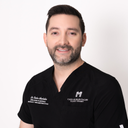Posted underBreast Augmentation q&a
Warmhearted591036Jul 12, 2023
Hello, I am going to have a breast augmentation through an axillary incision, the last doctor I saw said that for him the ideal incision would be 12 cm away from my nipple, but this region is very exposed, it is not a discreet area. Anyone can see the scar, even with my arms closed. He said he couldn't go any further as the equipment wasn't long enough for more than 14cm. I went to 8 surgeons, 6 of whom agreed to do it from 15cm. So... what is the ideal distance for incision?
Answers (6)
From board-certified doctors and trusted medical professionals
Dr. Daniel Barrett, MD

Dr. Daniel Barrett, MD
Board Certified Plastic Surgeon
Answer
Dr. Ronald J. Edelson, MD

Dr. Ronald J. Edelson, MD
Board Certified Plastic Surgeon
Answer
Dr. Bruce K. Smith, MD
Dr. Bruce K. Smith, MD
Board Certified Plastic Surgeon
Answer
Dr. Camille Cash, MD
Dr. Camille Cash, MD
Board Certified Plastic Surgeon
Answer
Dr. Connie Hiers, MD, FACS
Dr. Connie Hiers, MD, FACS
Board Certified Plastic Surgeon
Answer
More Breast Augmentation Questions
See all Breast Augmentation Q&AWE SEND PRETTY
EMAILS
What’s trending? Who’s turning heads? Which TikTok myths need busting? We’ve got you. No fluff, no gatekeeping—just real talk. Get our free, unfiltered newsletter.
